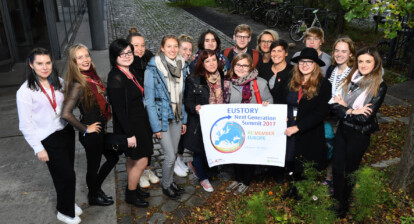How does Europe’s diverse past fit into one single museum and which are the main processes and phenomena that have united and divided Europeans through time? How does memory shape different visions of the past? And what can history tell us when we look ahead? Participants of the workshop took part in the challenging process of building a museum of Europe’s past and investigated how history and politics are intertwined.
The participants brought images and photos with them to Berlin representing those parts of Europe’s history that are crucial to them. During the Summit they combined their images and created a paper cut animation movie, which they showed and commented during the closing event on the 9th of October. Find the full animation and a short making-of-video below that shows how this ambitious project came to life!
I landed in Berlin without any document. This is amazing if you consider that when my parents were young, they needed a visa to visit Germany. We are lucky that we live in this period of time, but we need to protect what we have!
Workshop Partner








